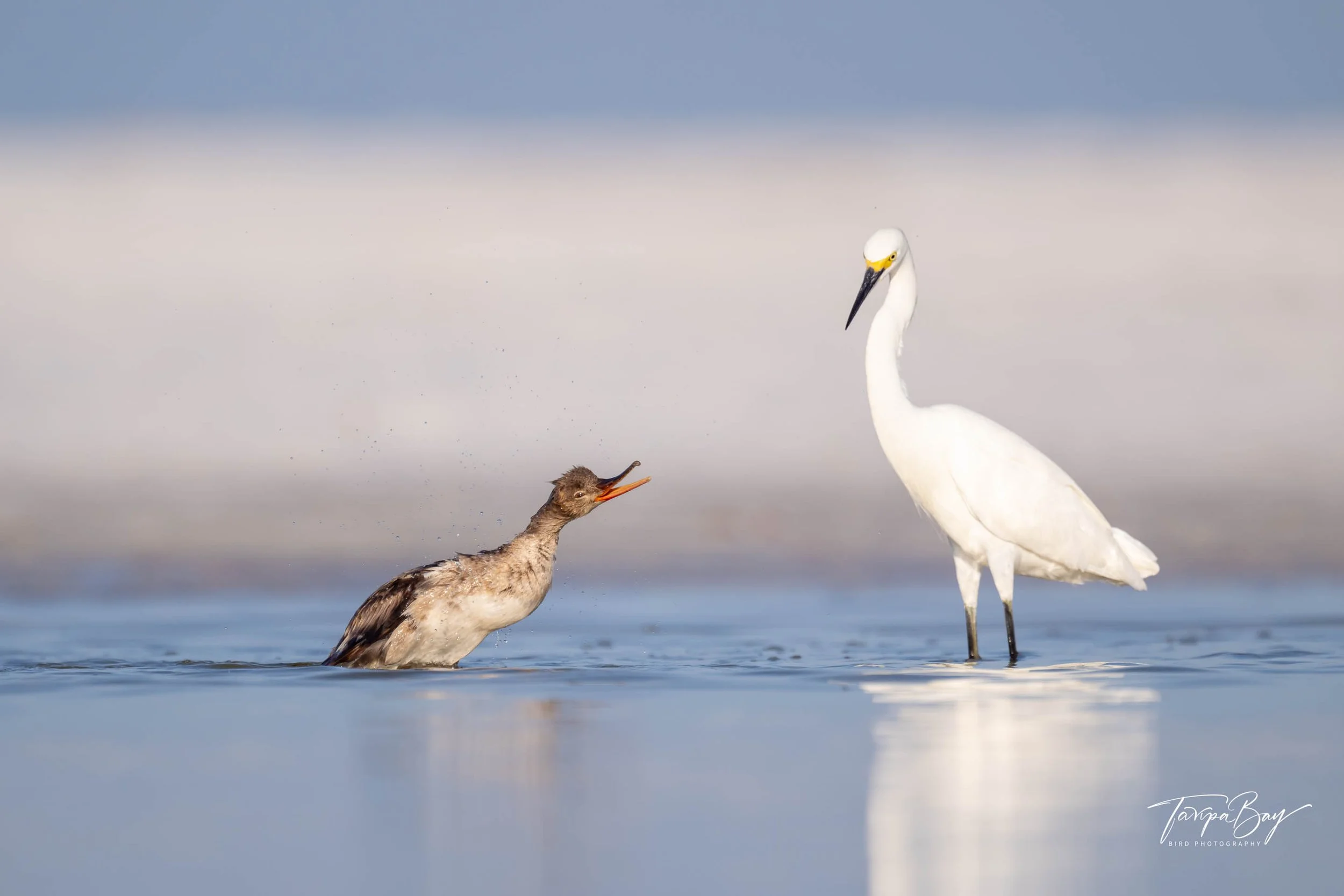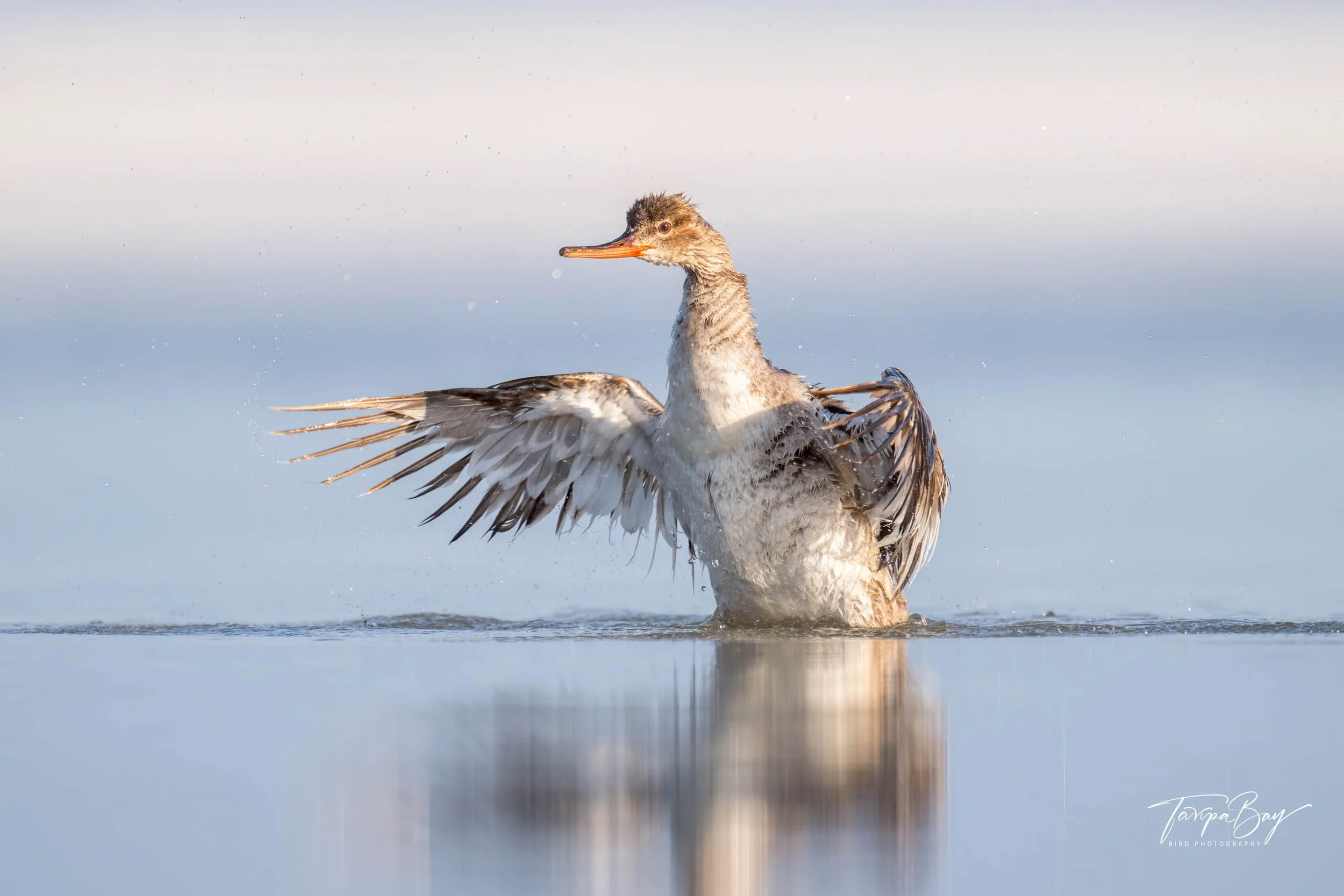Field Notes from Fort De Soto
This weekend I visited Fort De Soto in Pinellas County, Florida on Saturday and Sunday mornings. I arrived at the entrance gate just before 7am each day to find a line of cars waiting for the park to open. Skies were clear and there was virtually no wind. The tide was in so there was plenty of water for the wading birds. As soon as I stepped out of my vehicle at North Beach I was swarmed by mosquitos. On the beach, the no-see-ums joined in. Lots of flies were around the birds as well. In a few shots I left the flies in, whereas in others I cloned them out.
Saturday morning there were about a half dozen Roseate Spoonbills on the beach. I only had about 3 to 5 minutes with them before a guy with a beach trolley came by and spooked them away. I managed to get off a few shots but certainly wish I had more time.
Roseate Spoonbill. Nikon Z9 with Nikkor Z 800mm f/6.3 lens handheld at f/6.3, 1/2000, ISO 500.
Roseate Spoonbill. Nikon Z9 with Nikkor Z 800mm f/6.3 lens handheld at f/6.3, 1/2000, ISO 500.
An immature Little Blue Heron with calico coloring was also wading nearby. I got a few shots of it playing with a leaf before it was flushed by a photographer running to photograph who knows what.
Immature Little Blue Heron. Nikon Z9 with Nikkor Z 800mm f/6.3 lens handheld at f/6.3, 1/1250, ISO 320.
As soon as the spoonbills and the Little Blue Heron were flushed, all the photographers trained their cameras on the juvenile Reddish Egret. Like its parents, the young Reddish put on a nice show as it used its wings to hunt with great effect. I’ll post more pictures of this bird and the adults in a separate post.
Immature Little Blue Heron. Nikon Z9 with Nikkor Z 800mm f/6.3 lens handheld at f/6.3, 1/2500, ISO 640.
Lastly, the resident female Red-breasted Merganser made a showing. Her good friend, the Snowy Egret, was at her side as well to snag an opportunistic meal. Like the Reddish, the hunting behavior of the merganser is a thrill to watch and photograph. She dives into the water like a torpedo, swirling the water’s surface as she rapidly twists and turns under the water in pursuit of small fish. When she surfaces, she will either crane her neck and shake of the water or lift her whole body up and flap her wings. Just a lot of fund to watch.





Many areas of North Beach that have been roped off for the nesting birds remain roped off. Of note, the lagoon area remains off-limits and that is where the Roseate Spoonbills, Little Blue Herons, American Oystercatchers, and the white morph of the Reddish Egret were on Sunday morning. A lot of photographers, including myself, were disappointed to see it roped off now that all the juveniles have fledged. Rumor is that the area might remain roped off beyond the nesting season for the whole summer, if not permanently. I have mixed feelings about that, as that will surely be good for the birds to have more protected space. It will also adversely impact photographers and their ability to share the beauty of these birds with the non-birding world, which is also important for conservation.
What are your thoughts? Should the lagoon area be roped off to create a permanent bird sanctuary that is off limits to all people, or should it only be off limits during nesting season? Let me know in the comment section below.




